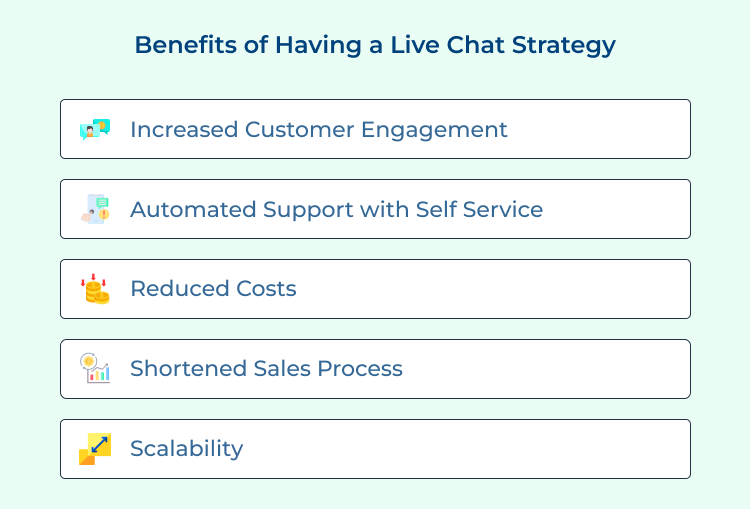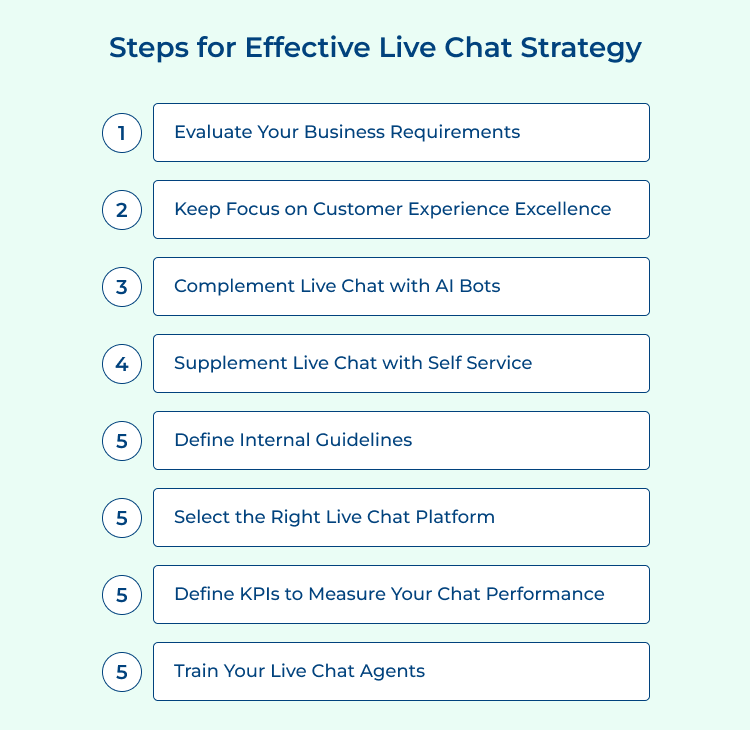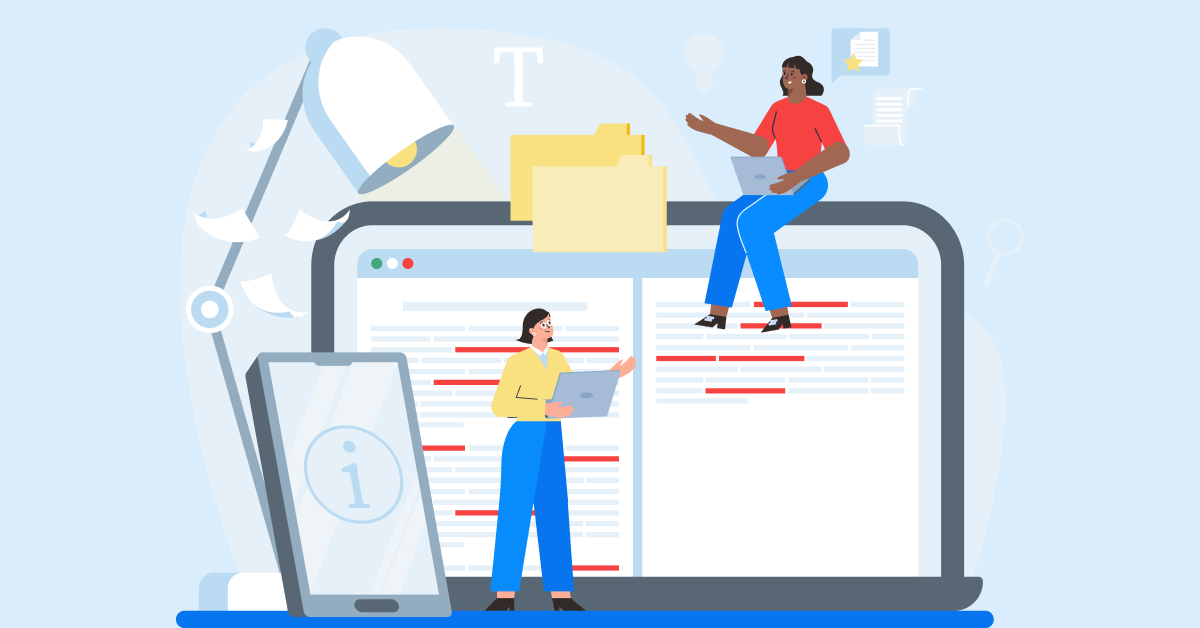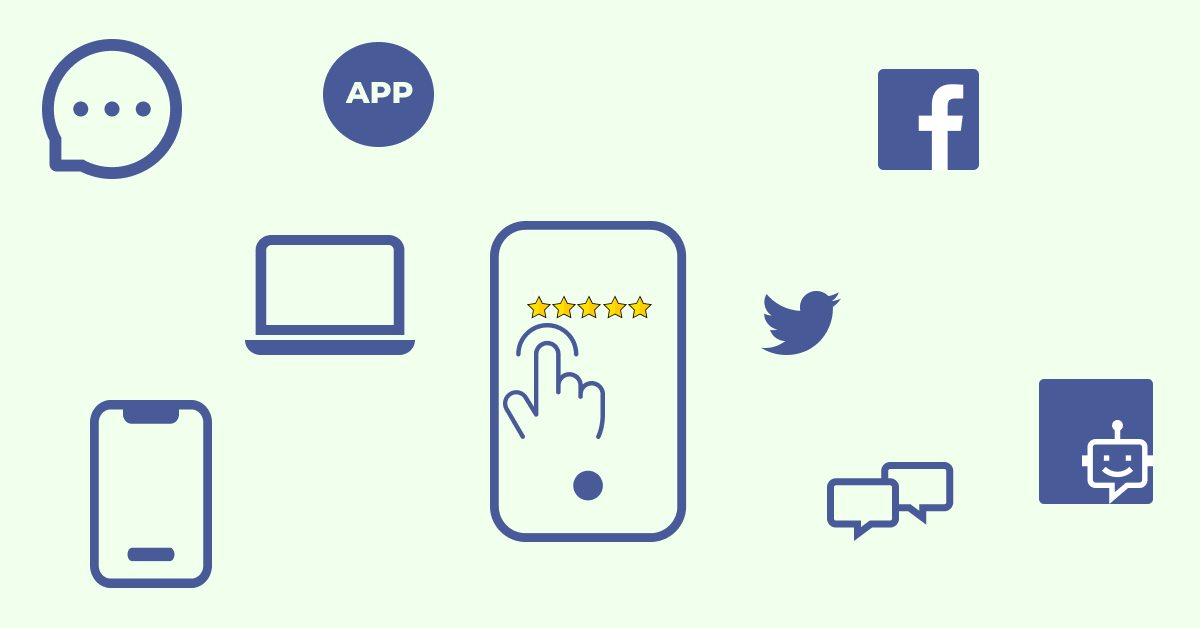Customers no longer want to deal with the hassles of waiting on hold for customer service. They prefer the convenience of having their queries responded to in real time. Live chat has become a necessity in the modern digital space for any business wanting to create a truly successful customer experience (CX).
41% of consumers prefer live chat to connect with the support teams and have the highest consumer satisfaction rate at 92%.
Live chat allows clients instant access to support representatives who can quickly address their issues. Hence, it is clear why any successful CX program must include a live chat strategy.
By implementing a live chat strategy, you can improve customer service communication that enhances the experience and develops strong relationships with customers. Creating and deploying a great web chat strategy is not a difficult process.
Let us discuss what live chat is needed, its best practices, and actionable steps that businesses can take to deliver an effective live chat strategy.
Live Chat Strategy: Definition
A live chat strategy is defined as a plan that enables a company to proactively engage customers, address their questions or concerns instantly, and use the conversation to drive sales.
A successful web chat strategy will include planning how customer questions are answered, staff training on customer service best practices, tracking customer metrics such as satisfaction and abandonment rates, and even analytical tools like AI-driven software solutions to help agents streamline customer conversations.
Why Do You Need to Have a Live Chat Strategy?
A live chat strategy helps companies provide better customer service while potentially increasing sales or conversion rates. Live chat gives companies the chance to personalize interactions with their customers by showing they are truly listening to their needs and responding in kind.
By addressing customer inquiries quickly via live chat, companies can reduce support costs. Gathering data from chats can also assist customers by generating recommendations based on past conversations. A comprehensive live chat strategy is an invaluable asset for businesses looking to build loyal relationships with their customers.
Unlike reactive support like email or phone, proactive live chat support enables you to see the activity of the user on the website. Implementing live chat as part of the overall customer communication strategy can help businesses across key business functions.
Benefits of Having a Live Chat Strategy
41% of consumers prefer live chat to connect with the support teams and have the highest consumer satisfaction rate at 92%. A strategic live chat strategy can help create tremendous value for both customers and businesses alike.

Here are some key benefits of having an effective live chat strategy:
- Increased customer engagement: Live chat provides customers with a convenient way to ask questions, receive answers instantly, and get the help they need without waiting in long queues or waiting on hold for hours. It also engages customers by offering personalized support that can be tailored according to customer needs.
- Automated support with self-service: Live chat helps provide automated support by using self-help solutions like online FAQs and embedded video tutorials that customers can access immediately when they need assistance. It allows businesses to offer 24/7 support without additional costs associated with traditional customer service channels.
- Reduced costs: Live chat eliminates the need for expensive staff call centers that reduce overhead costs associated with providing traditional customer service channels. By deploying chatbots, businesses can save time that would have otherwise been spent answering mundane inquiries from customers who could have been easily helped through automated solutions.
- Shortened sales process: Live chat offers a great alternative for businesses when it comes to shortening the sales process by quickly responding to queries. It helps in in quick decision making and doing so increases lead conversion rates by up to 40%.
- Scalability: It is one of the key advantages of using live chat tools. It automates many tasks allowing users to respond to hundreds of inquiries at once easily. It is not possible through more traditional methods such as telephone support or email responses due to limited resources available.
8 Actionable Steps for an Effective Live Chat Strategy
As per the Econsultancy report, “Customers applaud the advantage of being able to use live chat without committing a huge chunk of time and priority to the task.”
There are a couple of key areas that need to be properly planned for successfully implementing the live chat strategy. Defining the core objectives and defining the plan effectively will help to implement the live chat service successfully.

Here is a list of important steps to be considered while outlining a live chat strategy for your business.
- Evaluate Your Business Requirements
- Keep Focus on Customer Experience Excellence
- Complement Live Chat with AI Bots
- Supplement Live Chat with Self Service
- Define Internal Guidelines
- Define KPIs to Measure Your Chat Performance
- Train Your Live Chat Agents
- Train Your Live Chat Agents
1. Evaluate Your Business Requirements
When it comes to developing a live chat strategy, you need to first evaluate your business needs and determine how a live chat system can benefit your organization. It will help ensure that the resources invested in a live chat system are actually being used to improve customer service and engagement.
Consider analyzing various customer service requests, considering customer buying behavior, determining the peak hours for interactions, and evaluating how many agents you need at any given time.
Pro Tips:
- Start by evaluating your business needs and goals to ensure that implementing a live chat strategy will be beneficial to your organization.
- Set measurable goals such as “increase sales conversion rate” or “improve customer satisfaction ratings.
- Utilize analytics tools to track key performance indicators like customer wait time, abandonment rates, and total conversations handled so you can measure the effectiveness of your strategy over time.
2. Keep Focus on Customer Experience Excellence
Your live chat strategy should always be about providing excellent customer experience. This should remain your priority when developing content or selecting new chat software and other tools.
So things like delivering personalized conversations, ensuring secure access to sensitive data, using automated triggers/ bots & analytics to meet customer needs quickly, etc., should all be part of the plan.
Implementing live chat strategies that would allow customers to leave feedback or request reviews could help further bolster the user experience.
Pro Tips:
- Service your customers professionally and courteously at all times.
- Ensure the customer has a quick response to their inquiries.
- Utilize chat transcripts, surveys, and analytics to provide feedback and insights on customer satisfaction levels.
3. Complement Live Chat with AI Bots
AI bots are quickly emerging as an effective complement to live chat for customer service. If programmed correctly, they can take on many of the mundane tasks, such as directing customers to relevant web pages or forms and providing basic customer service inquiries.

Chabots can provide personalized customer service by remembering and responding to customers’ histories or behaviors. However, in order for them to be effective, it is important to ensure that customer inquiries are captured properly and that customers receive responses in a timely manner.
Pro Tips:
- Use AI Bots to provide automated answers quickly in order to free up resources and ensure fast response times.
- Leverage AI technology and machine learning algorithms to be able to deepen customer relationships and determine which conversations should be handled by agents.
- Train AI bots on FAQs and use natural language processing for a smoother customer experience when interacting with them.
4. Supplement Live Chat with Self Service
Brands can improve their customer service by introducing self-service options for customers who prefer more interactive and personalized solutions than a simple bot interaction.
Companies can implement self-service options through menu bars, FAQs, knowledge databases, interactive guides, and more depending on the type of business.
These options allow customers to access answers without having to speak with an agent and give agents valuable insights into user behavior or intent so they can efficiently serve customers who require more help or greater assistance in assessing their needs.
Overall, adding various self-service options that are easily accessible will create a more efficient live chat experience for all parties involved.
Pro Tips:
- Utilize automated self-service options to preemptively provide customers with the help they need before beginning a live chat session.
- Allow customers to pick & choose their preferences while allowing them to retain control over their support experience.
- Make sure self-service options are easily accessible, intuitive to use, and have well-written content that is tailored towards the right customer base.
5. Define Internal Guidelines
Before starting any live chat service, it is important to establish internal guidelines for use. It should include a protocol on how to handle customer inquiries and complaints when to transfer chats to other team members or departments, what types of communication are allowed in the chat system, and who is responsible for issuing responses and updates.
By having an established set of internal procedures, customer satisfaction and employee performance can be improved throughout the duration of the live chat service.
Pro Tips:
- Establish clear internal guidelines for their customer service team to follow when interacting with customers via live chat.
- Set a strict set of service levels and response times to ensure customers are getting the attention they deserve.
- Train customer service staff thoroughly on the platform and how to best use it for each customer interaction type.
6. Select the Right Live Chat Platform
After deciding upon your internal guidelines, selecting the most appropriate platform for your objectives is essential for success.
Ensure that the chosen platform offers features like customizable message templates, reporting capabilities, API integrations with existing systems and applications, email notifications, encrypted session security, and mobile compatibility amongst others as per your requirements.
Pro Tips:
- The best practice for selecting the right live chat platform is to thoroughly assess its features and capabilities in order to ensure it meets your needs and those of your customers.
- When selecting a live chat for customer service, look for one that prioritizes speed and ease of use over aesthetic design or complicated features.
- Consider the scalability of different live chat software when making a selection to ensure that it will grow with your business as your customer base expands.
7. Define KPIs to Measure Your Chat Performance
Establishing evaluation metrics from key performance indicators allows you to track progress on longer-term goals that relate to customer satisfaction ratings, sales figures, and employee efficiency levels so you can measure return on investment (ROI).
Auxiliary benefits such as positive branding due to better engagement rates will show themselves later down the line.
Looking at these factors together helps you assess effectiveness over time instead of just immediate reactivity and response rate successes in order to have a more comprehensive view of which strategies are working well long-term.
Pro Tips:
- Define clear and measurable KPIs, like Average Response Time, Number of Resolved Issues, Customer Satisfaction Score (CSAT) etc., to measure the Return on Investment (RoI) of your live chat strategy.
- Create and maintain an effective customer support process flow within your organization to ensure that the right team of experts properly and quickly attends to all queries.
- Leverage customer feedback to identify areas for further improvement in the existing live chat system such as introducing new features or streamlining processes.
8. Train Your Live Chat Agents
To ensure your customers have a speedy and satisfactory resolution to their queries, it is crucial to have well-trained live chat agents.
Conducting regular customer service training that focuses on providing excellent customer service and that familiarizes agents with company products and policies will help ensure they are able to provide the best possible advice or resolutions to inquiries or problems.
Pro Tips:
- Ensure your live chat agents receive comprehensive training on product knowledge, customer service principles, as well as the use of the platform to identify customer needs and set appropriate expectations.
- Create a comprehensive library of quick answers that agents can rely on to improve response time when addressing simple issues.
- Develop performance KPIs that drive customer satisfaction while evaluating agent performance over time to ensure they are meeting goals.
- Train your support agents with soft skills such as to be patient and empathetic. They should be polite and gentle towards your customers will end up with positive results.
The Future Road Map of Live Chat Strategy
Planning an effective live chat strategy helps businesses to achieve objectives but you should also consider other key factors such as omnichannel, team management, and internal training to get optimum results.
With AI bots, live chat can become the most powerful channel to deliver sales and support assistance and also automating your routine tasks. So it’s the best of both worlds, better performance, and lower costs.







